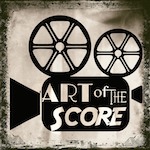Episode 13: Harry Potter and the Philosopher's Stone
/From Hedwig’s theme to Quidditch matches, the musical world of Hogwarts may be one of the most iconic musical contributions to the film world this millennia. John Williams worked orchestral magic and brought us a unique contribution of fantasy, off-beat fanfares, and even a bit of jazz harmony. But what makes this great score tick? Join us as we dissect the power, the charm, and the enchantment of Harry Potter and the Philosopher’s Stone.
Episode notes:
07:00 – a brief history of the franchise
10:45 – Harry Potter, one of the largest franchises of the 21st century
11:22 – John Williams on how he came to be involved with Harry Potter
15:00 – Hedwig’s Theme
16:42 – the celeste and its use in other films and, famously, Tchaikovsky’s Dance of the Sugar Plum Fairy
18:15 – Andrew drops a bombshell
20:10 – Breaking down Hedwig’s Theme
26:20 – a recounting of the day the musicians first encountered the score
28:00 – Hedwig’s Theme and its variations
31:25 – is Hedwig’s Theme the last John Williams melody to enter pop culture?
33:00 – the Flying Theme or the Nimbus 2000 Theme
44:15 – Harry’s Theme or the Family Theme
50:27 – the appearance of the tri-tone
52:30 – Harry’s Wondrous World Theme
1:00:08 – the Hogwarts School Song
1:02:00 – we apologise for what is about to happen…
1:04:50 – Philosopher’s vs Sorcerer’s (Stone) and some of the localisations
1:08:10 – the Stone motif
1:16:00 – the Voldemort motifs
1:23:00 – the music of Diagon Alley
1:31:10 – some banquet music from Harry Potter and other films
1:36:50 – the Quidditch Fanfare and its similarity to other “arena” cues
1:40:30 – John Williams’ use of synthesizer for the Invisibility Cloak
1:43:10 – the diegetic (harp) music of Harry Potter
1:47:00 – the action music compositional style of early 2000s John Williams
We love to hear from our listeners – get in touch via Twitter, Instagram, and Facebook, and if you like The Art of the Score, please take a moment to subscribe, rate and comment



